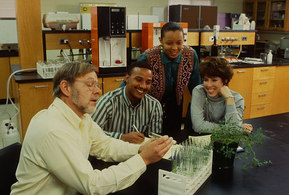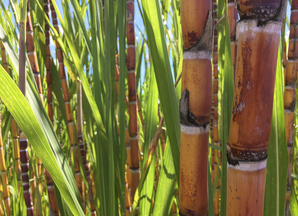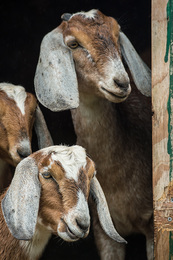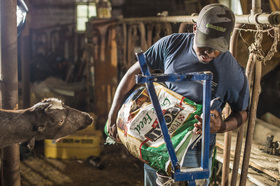|
Having trouble viewing this email? View it as a Web page.

|
|
|
Fresh from the Field is a weekly album showcasing transformative impacts made by grantees supported by the National Institute of Food and Agriculture.
This week's issue is
dedicated to our 1890 land-grant university partners and to honor the many achievements
of African-Americans.
Editor: Falita Liles Feb.15, 2018
|
|
Success Stories

Nanomaterials
Detection in Food, Water, and Environmental Waste
Use of nanotechnology is
increasing in virtually every segment of the food industry. Delaware State
University acquired an Inductively Coupled Plasma-Mass Spectrometer, an
instrument that can detect metals and several non-metals at micro levels of
concentration in pharmacology, toxicology, and water quality and safety
testing. To date, three graduate students in applied chemistry and food science
and three undergraduate students have been trained and are currently proficient
in running experiments independently.
NIFA supports this research through the
1890 Capacity Building Grants Program.
Learn
more at NIFA's Data Gateway USDA photo.
|
News Coverage
 Development of
Sustainable Food Packaging Systems Derived from Renewable Biomass
Tuskegee University researchers are using biomass wastes to create food packaging
systems with advanced antimicrobial properties. The researchers isolated
cellulose from stevia and sugarcane and incorporated polymers to develop the
active bio-plastic packaging film, proving the potential of cellulose-based
composite films for high-end applications.
NIFA
supports this research through the 1890 Capacity Building Grants Program.
Learn more at NIFA's Data Gateway Photo by Getty Images.
|
The Library

Genome-Wide
Association Identifies Alpine Goats with High Milk Production
Researchers
at Langston University are using genome-wide association to identify
Alpine goats that produce the most milk. In addition, Langston faculty have
developed advanced laboratory techniques and methods of data analysis, which
have been used for training and professional development. Over 200 milk samples
from which DNA were collected, SNP assays conducted, and Genome-Wide
Association Study analyses were used to generate decipherable data.
NIFA supports this research through the Agriculture and Food Research Initiative.
Learn more at NIFA's Data Gateway USDA Photo.
|
Video
 Smart Media and Livestock Management Concerns
Prairie
View A & M University (PVAMU) researchers and extension agents developed a
community-based website providing short videos demonstrating livestock
management concerns for the local farmers and ranchers. PVAMU created the
videos to assist in identifying livestock management issues and solving
them. The resource builds on the needs of clientele and adds to the
existing literature regarding goat research. The entire project seeks to adapt
the use of smart media as an invaluable tool to allow extension agents to
assist their clientele in identifying livestock management issues and
ultimately finding solutions for these issues. Currently, PVAMU is developing
an app for on-site diagnosis tool.
NIFA supports this research through Evans-Allen Research Program.
Watch the PVAMU Livestock Videos. USDA Photo.
|
Tweet of the Week
#NIFAIMPACTS

|
|

NIFA’s mission is to invest in and advance agricultural research, education, and extension that solve societal challenges. NIFA’s investments in transformative science directly support the long-term prosperity and global preeminence of U.S. agriculture. To learn more about NIFA’s impact on agricultural sciences, visit www.nifa.usda.gov/Impacts, sign up for email updates or follow us on Twitter @USDA_NIFA, #NIFAImpacts.
USDA is an equal opportunity lender, provider, and employer.
|
|